The Fisher Building: A History of Detroit's Most Famous Building and Architectural Structure
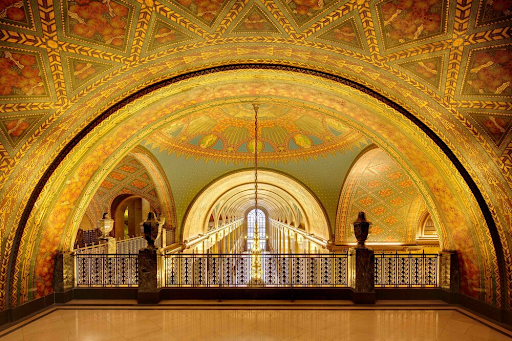

Brian Jeffries
Brian Jeffries, a seasoned BPA Advisor. Brian is dedicated to sharing his wealth of knowledge on construction projects and materials. With a focus on architecture and building envelopes, Brian contributes valuable insights that shape the discourse around innovative construction practices and materials.
Originally conceptualized as a way of bringing much-needed office space for their Fisher Body Company to downtown Detroit, the historic Fisher Building has evolved over the years to serve as Detroit’s greatest tribute. With a 325,000 square foot exterior, it is the largest marble-clad commercial building in the world. Keep reading for a detailed breakdown of Detroit’s most famous building and architectural triumph.
The Origins of the Fisher Name and Who Designed This Famous Structure
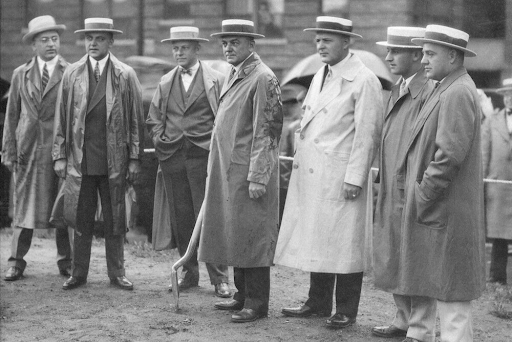
Image source: History — Fisher Building
What started as a horse-drawn carriage shop by Lawrence P. Fisher and wife Margaret in the late 1800’s quickly evolved into Fisher Body when their sons, Frederick, Charles, William, Lawrence, Edward, Alfred, and Howard (the Fisher brothers) moved operations to Detroit at the turn of the century to try their hand in the exploding motor vehicle scene.
Realizing that downtown Detroit did not have sufficient office space to accommodate their rapidly expanding operations, the Fisher brothers used proceeds from the sale of Fisher Body to General Motors in 1926 to help fund the construction of the landmark Fisher Building.
Sparing no expense in creating what they envisioned as the premier office and retail space in the world, the Fisher brothers hired renowned architect Albert Kahn and his associates (led by chief architect Joseph Nathaniel French) to create an emblem to the American work ethic and art sensibilities.
Widely considered one of Kahn’s greatest masterpieces, the Fisher Building is frequently referred to as “Detroit’s Largest Art Object” and “The Golden Tower.”
A Look at the Use of the Fisher Building Over Time

Image source: History — Fisher Building
Originally designed to accommodate the needs of the rapidly expanding Fisher Body company (a subsidiary of General Motors by 1926), the building was strategically placed right across the street from General Motors headquarters (Cadillac Palace).
Khan Associates originally planned the Fisher Building to be a series of three structures, with two 30-story buildings flanking a 60-story tower, but the Great Depression the year after the completion of the original Fisher Building squelched these designs and left the structure as the single 30-story building seen today.
The Fisher Building has changed hands many times over the years and has housed a diverse list of tenants. Today, The Platform is its primary owner and managing partner and is working to reestablish the Fisher brothers’ primary vision of making the Fisher Building Detroit’s premier venue for office, retail, and entertainment space. Some of the most notable tenants calling the Fisher Building home are Detroit Public Schools, Girl Scouts of Southeastern Michigan, Children’s Hospital of Michigan Foundation, and City Bakery.
Design and Architecture of the Fisher Building
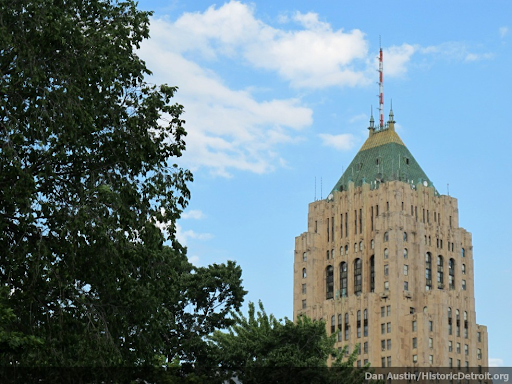
Image source: Fisher Building - Photos gallery — Historic Detroit
Described as the most beautiful building of its kind at the time of its completion in 1928, the Fisher Building encapsulates the spirit of progress that was taking Detroit architecture by storm in the Roaring Twenties.
Outside of a few minor exceptions, the Fisher Building is constructed entirely of granite and marble. More than 40 different types of marble from countries all across the world were used during the construction process. It is said to be designed in the art-deco style that was prevalent in the 1920’s, although its unique touches make it difficult to categorize it into a single style.
The base of the building, along with the first three stories, are built entirely with pink Minnesota marble and oriental granite along the exterior. This gives a stunning, natural earth aspect to the first 50 feet of the building.
Above the first three stories is a textured facade of Beaver Dam marvilla marble facing the street fronts and Carthage marble looking onto the courts. Natural light reflecting off of each of these materials gives the facade a distinguished aspect that makes it unique from all of its neighbors.
While the stately stone facade is truly breathtaking, you may be wondering how the architects got such a multiplicity of windows into the grand exterior? They broke each stone plane into panels via recessions in the wall surfaces. This allowed the architects to seamlessly insert the more than 1,800 bronze window frames to give the stately structure its “eyes over Detroit.”
With the 11 winged stories of the Fisher Building, many conservative architects thought that the building was a natural fit for a flat roof. But the designers of the Fisher Building had different ideas. There was simply too much of the Gothic embedded in the expansive stone base to be ignored. They leveraged these Gothic sensibilities and used a series of setbacks to taper the upper levels into a 30-story tower with a pointed pyramidal crown reminiscent of the most famous Gothic architecture of antiquity.
While the castle-esque fortress of the Fisher Building is impressive from a streetside view, the interior seems to go even further in terms of a “wow” factor. The Fisher Building was one of the first structures to feature automated elevators, adding a degree of luxury over older skyscrapers that were stairs-only or had manual elevators operated by attendants.
In addition, onlookers call the three-story lobby’s hand-painted barrel-vaulted ceilings “a mass of gorgeous color, shimmering like the plumage of exotic birds.” Interspersed among the painted arches is a litany of symbolic designs, images, and sayings, creating a sense of awe and wonder for the onlooker.
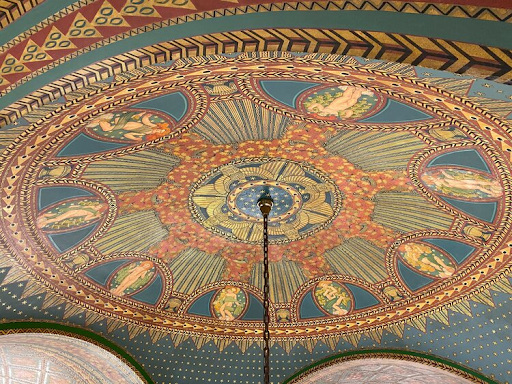
Image source: History — Fisher Building
Constructed mainly of Carthage marble, the three-story arcade is adorned with fluted marble pillars. While each pillar is a different color, the result is a harmonic effect that provides a warm welcome to the corridors.
The floors, constructed mainly of Italian marble, vary in warm tones of rose, light brown, and cream. Similar to many Roman churches, they produce an effect of grandeur in the Fisher Building. To provide an element of contrast, the floors of the second and third story concourses are made of Tennessee marble, while the walls consist of polished European marble.
Khan had traditionally used classical and renaissance as decor touches in most of his previous structures, but he had different ideas for the Fisher Building. Using modern American concepts, much of the artwork is composed of images depicting the wealth and power of the United States through commerce and transportation. There are also numerous sculptures, mosaics, and frescoes of eagles in various poses throughout the building, further encapsulating the power of the American dream in the Motor City.
The Fisher Building is also notable for changing the way that people park. With the addition of the 325,000 square foot structure, along with expansion from other motor vehicle companies at the time, the New Center district of downtown Detroit was becoming conspicuously cramped. As such, the Fisher Building was built with an attached 11-story parking garage to the rear of the building capable of accommodating up to 1,100 vehicles. With the majority of the building’s offices located on the first 11 winged stories of the building, most employees working in the Fisher Building had the then-unprecedented luxury of parking on the same floor on which they worked.
Architecture to Stand the Test of Time: Detroit’s Fisher Building Today
The largest marble-clad structure in the world, Detroit’s Fisher Building has survived the ups and downs of the Motor City since its completion in 1928, serving as a constant reminder for what is possible through the American work ethic. It remains Detroit’s greatest piece of art and is home to a diverse set of tenants, continuing to fulfill the Fisher brothers' dream of a vitalized downtown Detroit nearly 100 years later.
Get Smarter About Building Products
Join 50,000+ subscribers and get our 3 min daily newsletter on what matters in the building materials industry.
You might like this


7 Benefits of ACM Panels: A Versatile Building Material
In the ever-evolving field of construction and architecture, choosing the right materials can make all the difference in the outcome of a project. One such versatile material that has gained popularity in recent years is ACM, or Aluminum Composite Material, panels. ACM panels are renowned for their unique combination of properties, making them suitable for […]
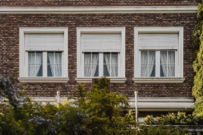

9 Exterior Building Materials for a Superior Home Renovation
Embarking on a home renovation project is an exciting opportunity to enhance both the aesthetics and functionality of your living space. Choosing the right exterior building products can significantly impact the overall quality and durability of your renovation. In this article, we will explore nine top-notch building products that can elevate your home’s exterior. 1. […]


Essential Elements in Building a Food Manufacturing Facility
Designing and constructing a food manufacturing facility is a complex process that requires careful planning and attention to detail. To ensure a successful and efficient operation, several essential elements need to be incorporated into the facility’s design. In this blog, we will explore the key components, including food production facility layout, the importance of industrial […]